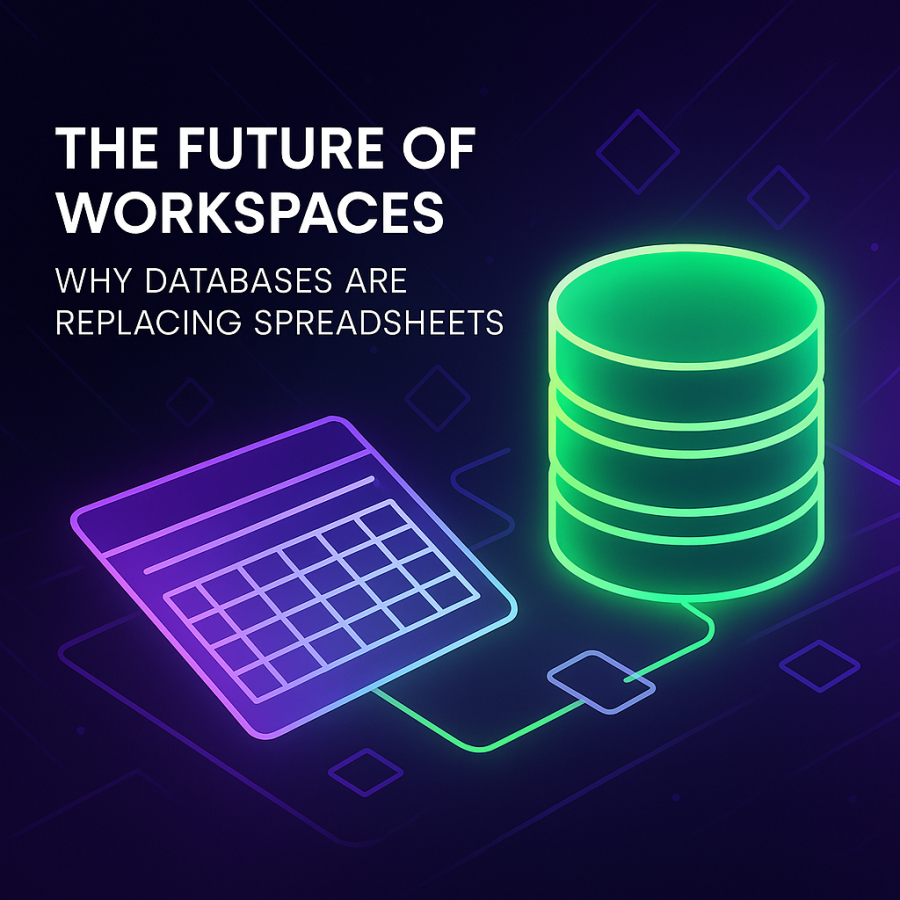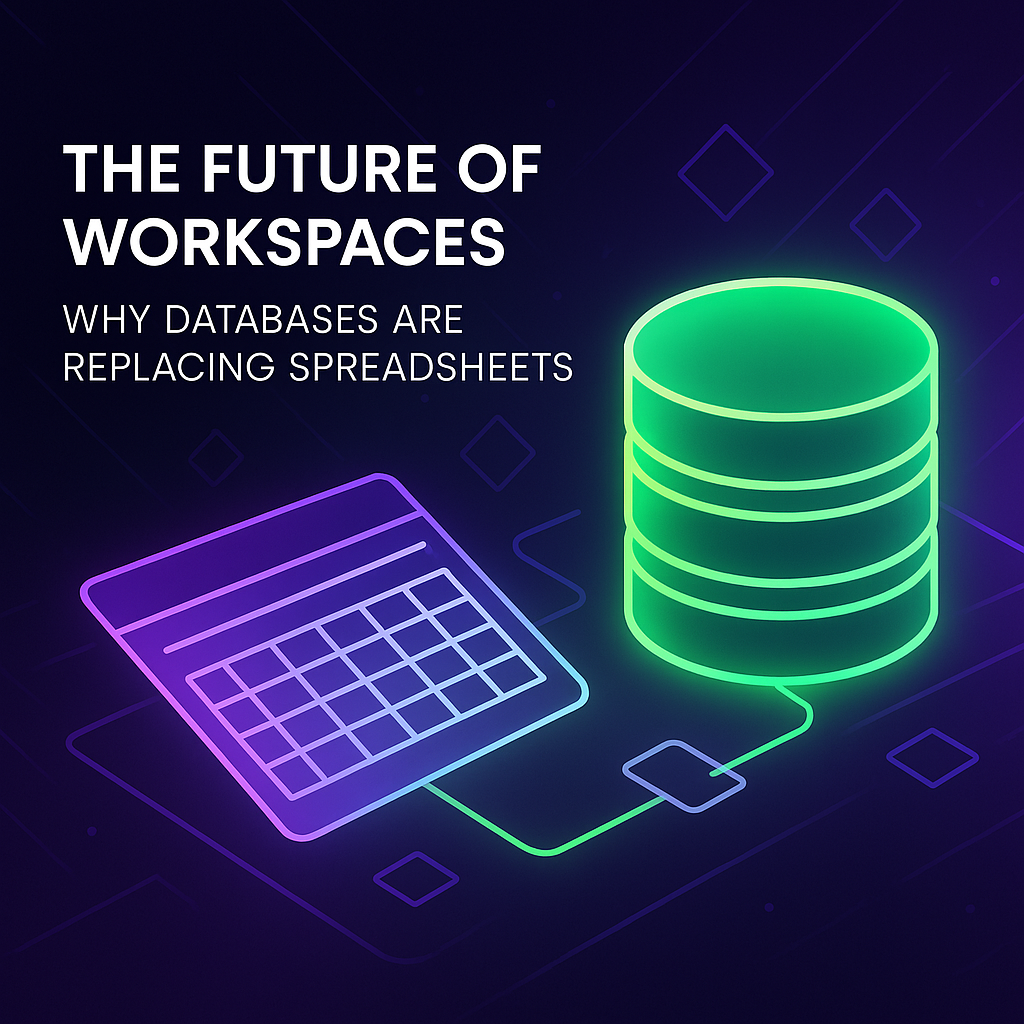In the ever-evolving world of business, staying ahead of the curve is essential. One of the biggest changes in recent years has been the shift from traditional spreadsheets to dynamic, flexible databases. This shift is more than just a trend—it’s a revolution in how we organize, analyze, and interact with data in the workplace. In this post, we’ll dive into why databases are now replacing spreadsheets as the preferred choice for modern workspaces, and how tools like Artavolo are driving this transformation.
The Rise of Databases in the Modern Workplace
For decades, spreadsheets like Microsoft Excel and Google Sheets have been the go-to tools for managing data, tracking projects, and performing analysis. But as businesses have become more complex, the limitations of spreadsheets have become more apparent.
Spreadsheets are often static, difficult to scale, and prone to errors. Managing large volumes of data, collaborating in real-time, or integrating with other software is often cumbersome and time-consuming. This is where databases come in.
Databases, particularly no-code databases, have revolutionized the way businesses handle data. Unlike spreadsheets, databases are designed to handle larger volumes of data efficiently, support complex relationships between data points, and provide powerful querying capabilities. They can integrate seamlessly with other tools, automate tasks, and offer real-time collaboration—features that spreadsheets can only dream of.
Why Spreadsheets Are Falling Behind
While spreadsheets are familiar and easy to use, they come with several drawbacks that can hamper productivity and accuracy:
1. Limited Collaboration
Spreadsheets often struggle with real-time collaboration. When multiple people are working on the same file, version control becomes a nightmare. It’s easy to lose track of changes, introduce errors, or even overwrite someone else’s work.
Databases, on the other hand, allow for real-time collaboration. Multiple users can access, update, and analyze the same dataset simultaneously without risking data conflicts. This makes them ideal for team-based environments and large-scale projects.
2. Data Integrity and Scalability Issues
Spreadsheets are prone to errors, especially when dealing with large datasets. Simple mistakes, like accidental formula errors or incorrect cell references, can lead to inaccurate results. As your data grows, the performance of spreadsheets often deteriorates, and managing large amounts of data becomes increasingly difficult.
Databases are built for scalability and data integrity. They ensure that data is structured and accurate, and they can handle massive datasets without slowing down. With the right tools, databases also provide easy validation checks, ensuring that your data stays consistent and reliable.
3. Lack of Automation
Spreadsheets require manual input for tasks like data entry, calculations, and updates. This not only increases the likelihood of errors but also takes up valuable time that could be spent on more important tasks.
Databases offer automation capabilities that can save you time and reduce the chance of human error. With tools like Artavolo, you can automate repetitive tasks, such as generating reports, sending notifications, and updating data based on predefined rules. This allows teams to focus on higher-level tasks while the system takes care of the repetitive work.
4. Limited Integration with Other Tools
Spreadsheets don’t integrate easily with other software tools, which makes syncing data across platforms a hassle. If you’re managing data in spreadsheets and also using project management, CRM, or accounting tools, you’ll likely need to manually copy and paste data between them—leading to inefficiencies and potential errors.
With a database-driven workspace, you can easily integrate with various apps and platforms. Databases allow for seamless data exchange across different tools, improving efficiency and ensuring that data is up-to-date across the board.
The Advantages of Databases Over Spreadsheets
Let’s take a deeper look at the key benefits of using databases for managing workspaces in the modern business environment:
1. Better Organization and Flexibility
Databases provide the structure to organize your data into tables, views, and relationships. Unlike spreadsheets, where you have to manually manage rows and columns, databases allow you to define your own structure and easily connect data points. This means you can create more complex, yet well-organized datasets that make it easier to extract insights.
2. Enhanced Reporting and Analytics
Databases enable more advanced querying and reporting capabilities. You can easily create custom reports, run sophisticated queries, and even use advanced data analysis features without needing complex formulas or programming skills.
Tools like Artavolo are designed to allow users to pull data from multiple sources and analyze it in real-time. This makes it much easier to make data-driven decisions that can have a direct impact on your business.
3. Real-Time Collaboration
With databases, multiple users can collaborate in real-time without worrying about version control. Updates are instantly reflected across the system, ensuring that everyone is working with the most current data. This is especially valuable for remote teams who need to work together on the same project or task, but it also benefits in-house teams working on larger, multi-faceted projects.
4. Automation and Workflows
Databases can automate many repetitive tasks. For example, in a database-driven system, you can set up workflows that automatically trigger actions based on certain conditions. For instance, you can set reminders for tasks that need to be completed, or automatically generate reports when new data is entered.
With tools like Artavolo, users can create customized workflows that improve productivity and minimize manual intervention.
5. Improved Security and Data Integrity
Security is a significant concern when working with sensitive data. Spreadsheets are vulnerable to unauthorized access, data corruption, and human error. Databases, however, offer better security features such as user permissions, role-based access, and audit trails to monitor changes made to the data.
In addition, databases ensure that your data is validated, reducing the chance of errors creeping in due to manual entry or formula mistakes.
How Artavolo is Paving the Way for Database-Driven Workspaces
At Artavolo, we’ve designed a powerful no-code platform that combines the flexibility of databases with the simplicity of drag-and-drop interfaces. We believe that every business, no matter its size or industry, should have access to powerful tools for managing data, automating workflows, and collaborating in real-time.
With Artavolo, you can:
-
Create custom databases that suit your unique business needs without any coding knowledge
-
Build dynamic workspaces to manage projects, tasks, and data efficiently
-
Automate workflows to save time and reduce human error
-
Integrate seamlessly with other tools and platforms
-
Collaborate in real-time with your team, no matter where they are
In 2025 and beyond, businesses that embrace database-driven workspaces will be able to streamline operations, improve collaboration, and unlock new levels of productivity.
Conclusion: The Future Is Database-Driven
The shift from spreadsheets to databases is not just a passing trend—it’s the future of how we work. Businesses that adapt to this change will be better equipped to handle the increasing complexity of modern work environments. With the right tools, like Artavolo, teams can become more efficient, organized, and data-driven than ever before.
Are you ready to make the switch to a database-driven workspace? Try Artavolo today and see how it can transform the way you manage your data.
Call to Action:
Ready to upgrade to a database-driven workspace? Start your free trial with Artavolo today and experience the power of real-time collaboration, automation, and smarter workflows!

